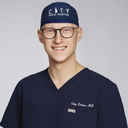Posted underEyelid Surgery q&a
Can orbital fat repositioning during transconjuctival lower blepharoplasty ever result in lumps or bumps?
As the the title of my question asks, I'm wondering how surgeons ensure a smooth contour during orbital fat repositioning during lower bleph? Can the fat bunch up, move, or migrate? Thank you.
Answers (6)
From board-certified doctors and trusted medical professionals
Dr. Gary Linkov, MD

Dr. Gary Linkov, MD
Board Certified Facial Plastic Surgeon
Answer
Dr. Andrew Campbell, MD

Dr. Andrew Campbell, MD
Board Certified Facial Plastic Surgeon
Answer
Dr. Katrinka L. Heher, MD
Dr. Katrinka L. Heher, MD
Oculoplastic Surgeon, Board Certified in Ophthalmology
Answer
Dr. Robert H. Hunsaker, MD
Dr. Robert H. Hunsaker, MD
Board Certified Plastic Surgeon
Answer
Dr. Bradford A. Bader, MD
Dr. Bradford A. Bader, MD
Board Certified Facial Plastic Surgeon
Answer
Dr. Daniel Straka, MD - Account Suspended
Dr. Daniel Straka, MD - Account Suspended
Oculoplastic Surgeon, Board Certified in Ophthalmology
Answer
More Eyelid Surgery Questions
See all Eyelid Surgery Q&AWE SEND PRETTY
EMAILS
What’s trending? Who’s turning heads? Which TikTok myths need busting? We’ve got you. No fluff, no gatekeeping—just real talk. Get our free, unfiltered newsletter.